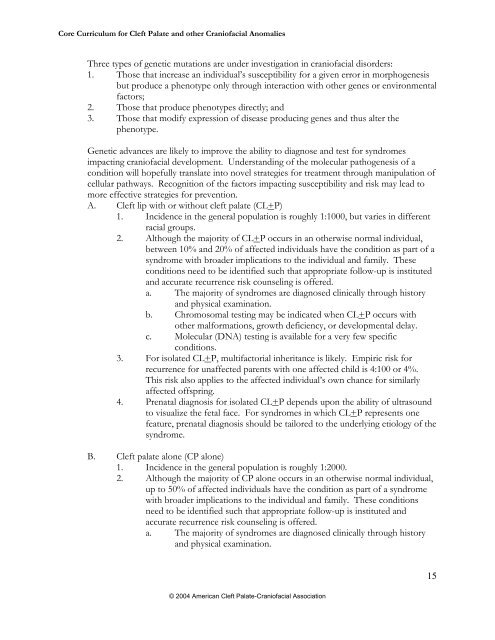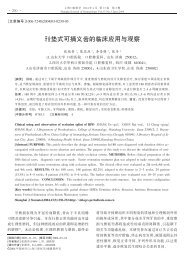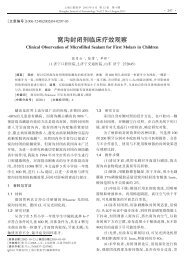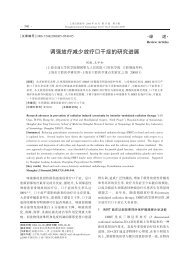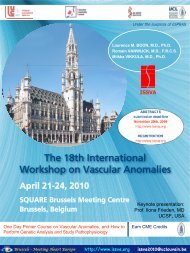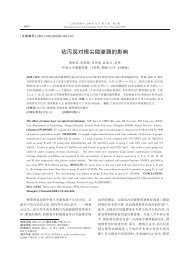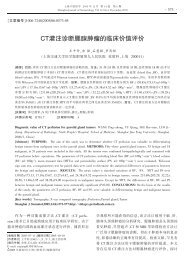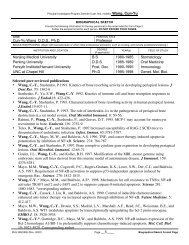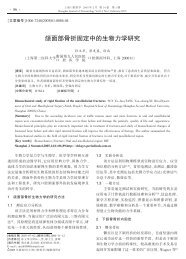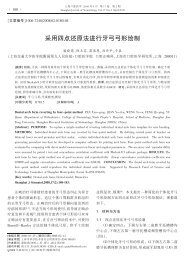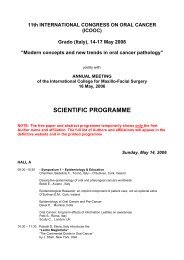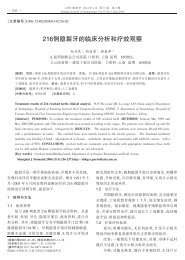core curriculum cleft lip/palate craniofacial anomalies
core curriculum cleft lip/palate craniofacial anomalies
core curriculum cleft lip/palate craniofacial anomalies
You also want an ePaper? Increase the reach of your titles
YUMPU automatically turns print PDFs into web optimized ePapers that Google loves.
Core Curriculum for Cleft Palate and other Craniofacial Anomalies<br />
Three types of genetic mutations are under investigation in <strong>craniofacial</strong> disorders:<br />
1. Those that increase an individual’s susceptibility for a given error in morphogenesis<br />
but produce a phenotype only through interaction with other genes or environmental<br />
factors;<br />
2. Those that produce phenotypes directly; and<br />
3. Those that modify expression of disease producing genes and thus alter the<br />
phenotype.<br />
Genetic advances are likely to improve the ability to diagnose and test for syndromes<br />
impacting <strong>craniofacial</strong> development. Understanding of the molecular pathogenesis of a<br />
condition will hopefully translate into novel strategies for treatment through manipulation of<br />
cellular pathways. Recognition of the factors impacting susceptibility and risk may lead to<br />
more effective strategies for prevention.<br />
A. Cleft <strong>lip</strong> with or without <strong>cleft</strong> <strong>palate</strong> (CL+P)<br />
1. Incidence in the general population is roughly 1:1000, but varies in different<br />
racial groups.<br />
2. Although the majority of CL+P occurs in an otherwise normal individual,<br />
between 10% and 20% of affected individuals have the condition as part of a<br />
syndrome with broader implications to the individual and family. These<br />
conditions need to be identified such that appropriate follow-up is instituted<br />
and accurate recurrence risk counseling is offered.<br />
a. The majority of syndromes are diagnosed clinically through history<br />
and physical examination.<br />
b. Chromosomal testing may be indicated when CL+P occurs with<br />
other malformations, growth deficiency, or developmental delay.<br />
c. Molecular (DNA) testing is available for a very few specific<br />
conditions.<br />
3. For isolated CL+P, multifactorial inheritance is likely. Empiric risk for<br />
recurrence for unaffected parents with one affected child is 4:100 or 4%.<br />
This risk also applies to the affected individual’s own chance for similarly<br />
affected offspring.<br />
4. Prenatal diagnosis for isolated CL+P depends upon the ability of ultrasound<br />
to visualize the fetal face. For syndromes in which CL+P represents one<br />
feature, prenatal diagnosis should be tailored to the underlying etiology of the<br />
syndrome.<br />
B. Cleft <strong>palate</strong> alone (CP alone)<br />
1. Incidence in the general population is roughly 1:2000.<br />
2. Although the majority of CP alone occurs in an otherwise normal individual,<br />
up to 50% of affected individuals have the condition as part of a syndrome<br />
with broader implications to the individual and family. These conditions<br />
need to be identified such that appropriate follow-up is instituted and<br />
accurate recurrence risk counseling is offered.<br />
a. The majority of syndromes are diagnosed clinically through history<br />
and physical examination.<br />
15<br />
© 2004 American Cleft Palate-Craniofacial Association


